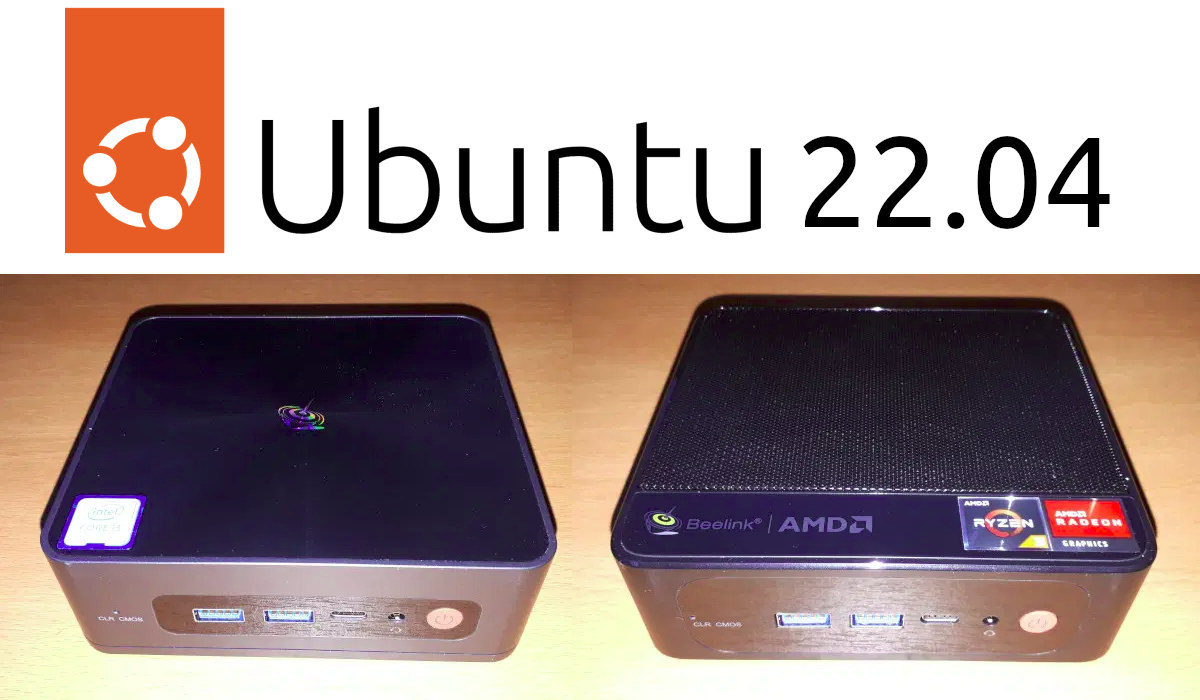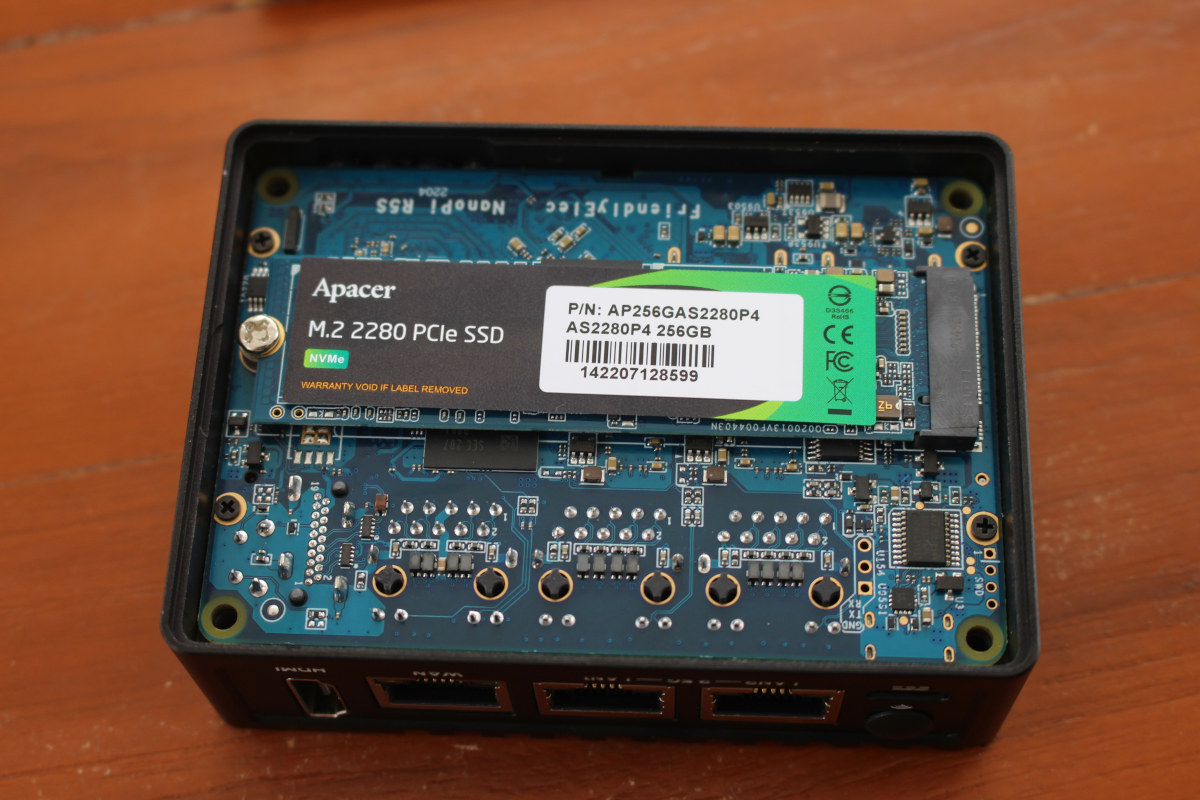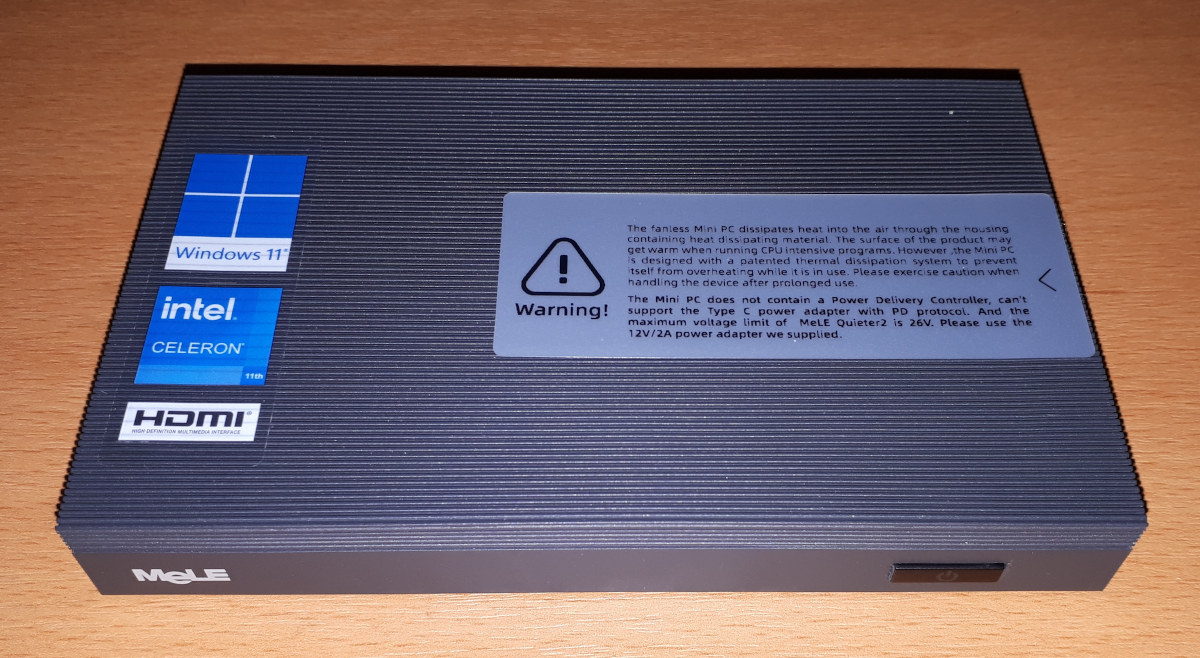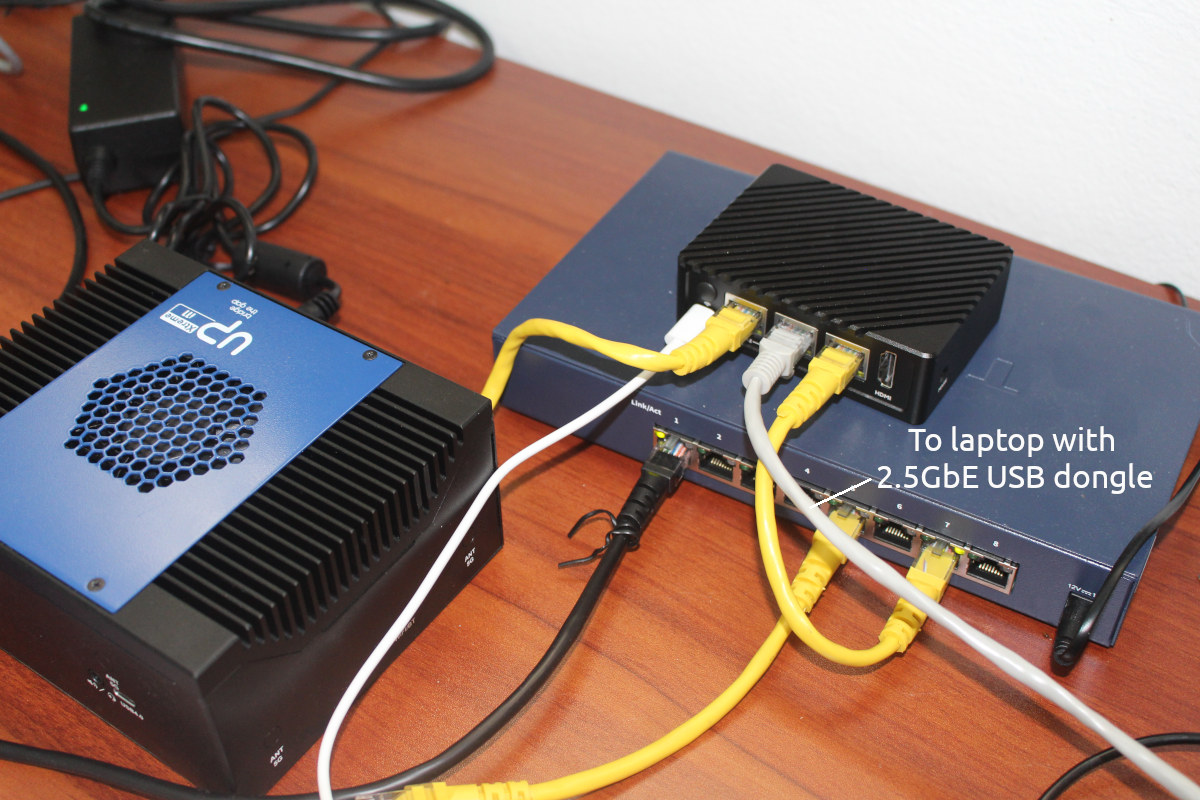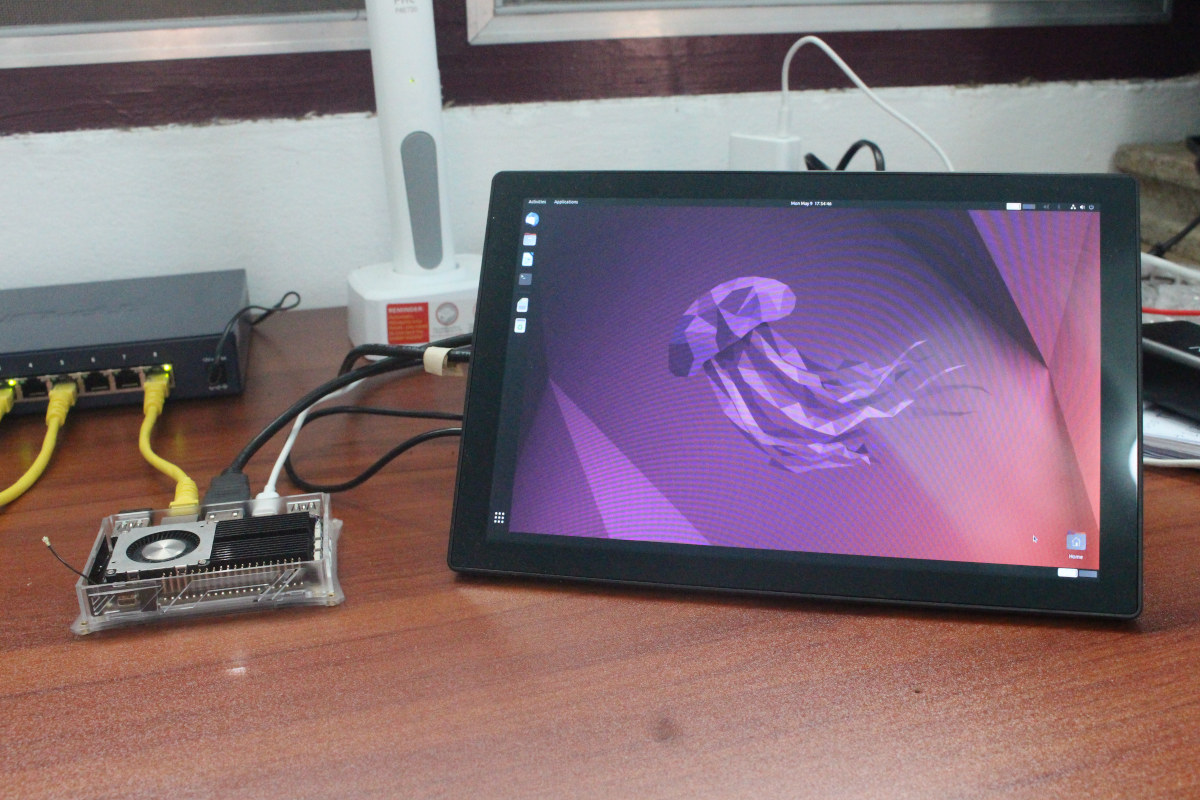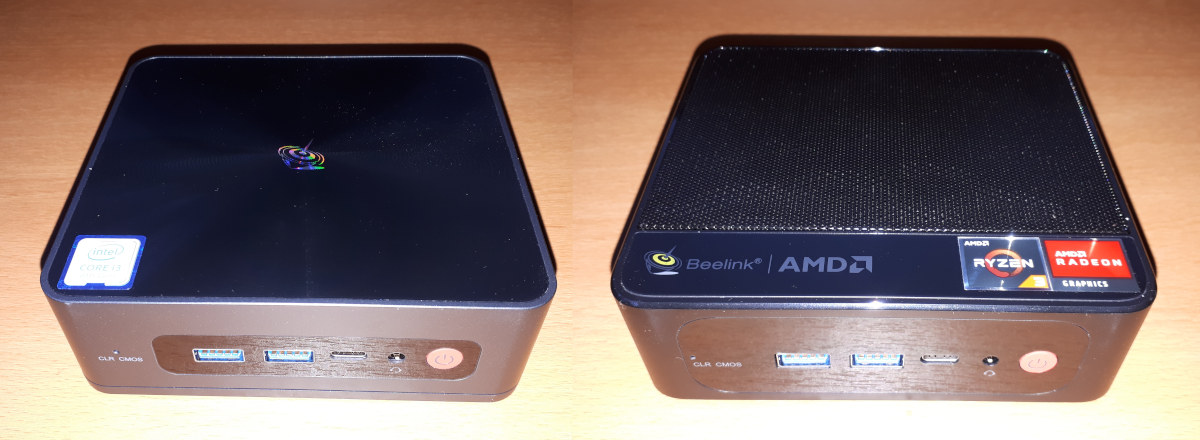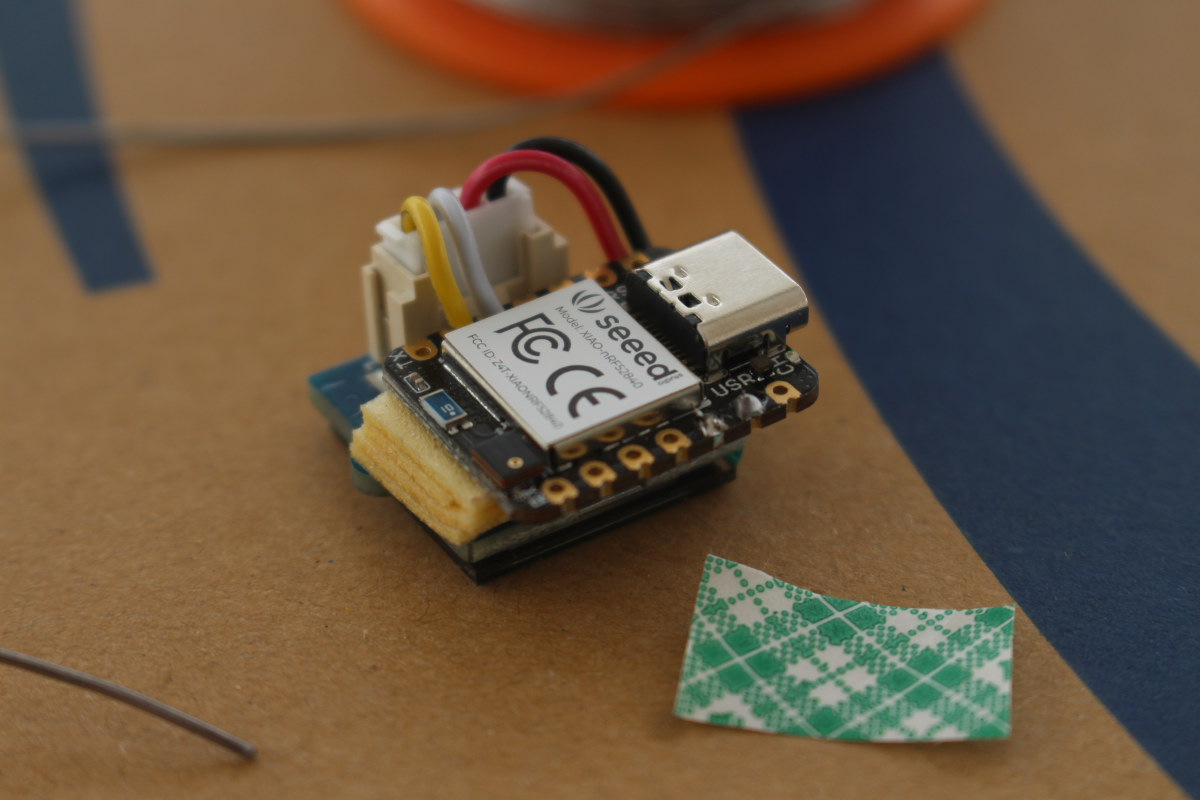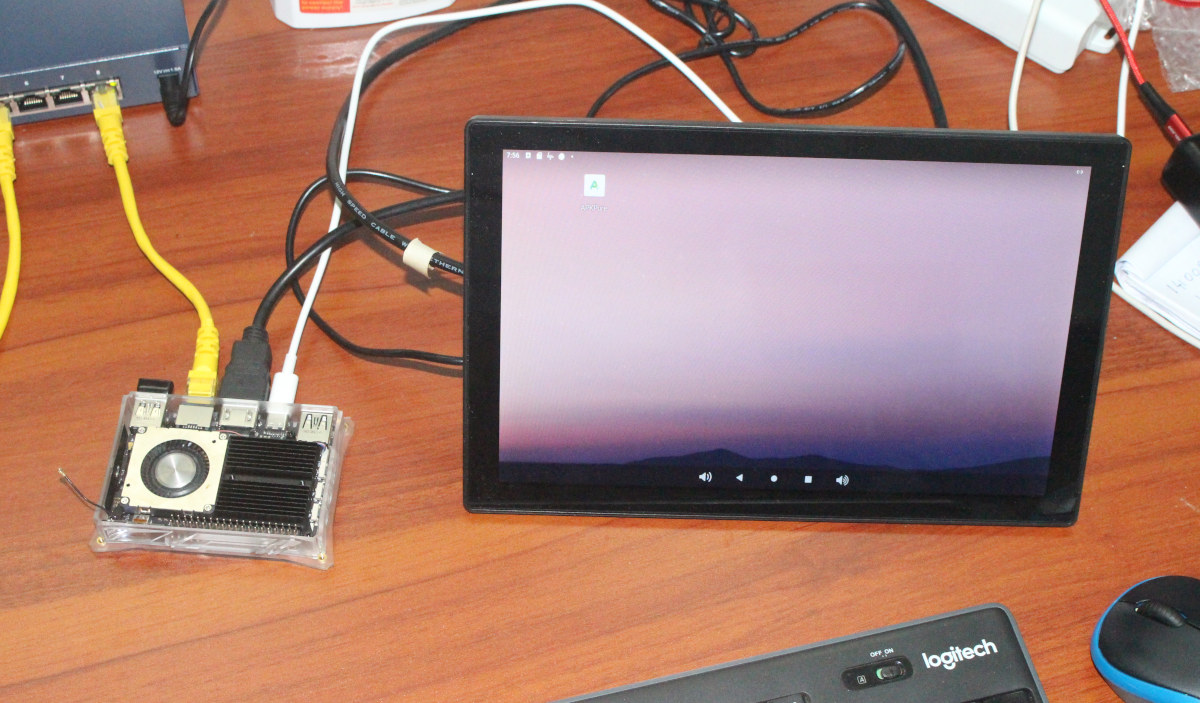Previously, I reviewed Beelink’s new SEi8 and SER3 mini PCs running Windows 11, so in this part, I will cover Ubuntu 22.04. Hardware Recap The SEi8 is an actively cooled Intel mini PC that physically consists of a 124 x 113 x 41 (4.88 x 4.45 x 1.61 inches) square metal case with a plastic top and uses Intel’s 14++ nm Coffee Lake Refresh Core i3-8109U processor from 2018 which is a dual-core 4-thread 3.00 GHz mobile processor boosting to 3.60 GHz with Intel’s Iris Plus Graphics 655. In comparison, the SER3 is an AMD mini PC and is physically very similar, consisting of a 126 x 113 x 40mm (4.96 x 4.45 x 1.57 inches) square metal case. It is also actively cooled and uses AMD’s 14 nm Zen Ryzen 3 3200U Picasso processor from 2019 which is a dual-core 4-thread 2.6 GHz mobile processor boosting to 3.5 GHz […]
NanoPi R5S preview – Part 2: Ubuntu 20.04 (FriendlyCore)
I started the NanoPi R5S review with an unboxing, a teardown, a quick try of the pre-installed OpenWrt-based FriendlyWrt, and some iperf3 benchmarks on the 2.5GbE interfaces that were rather disappointing. I test further I switched to the Ubuntu 20.04-based FriendlyCore image since I’m more familiar with Debian-based operating systems, and some tools will not run on OpenWrt. Note the performance is still not quite optimal, and that’s why I call this a preview since numbers should improve in the next few months as more people tweak the software. OpenWrt optimizations? But before jumping to Ubuntu, I gave an updated version of FriendlyWrt a try as FriendElec told me they had added some optimizations: We have made some optimizations on the new image, such as NIC interrupt settings, and offload support… So I downloaded “rk3568-eflasher-friendlywrt-20220526.img.gz” found on Google Drive, flashed it to a microSD card with USBImager, and booted it […]
MeLE Quieter3Q Review – Ultra-thin fanless mini PC tested with Windows 11, Ubuntu 22.04
MeLE has released a new and updated version of the Quieter mini PC called the Quieter3Q. Like before, it is a passive mini PC but now features the latest low-powered Intel Celeron Jasper Lake CPU and an upgraded PCIe 3.0 x2 M.2 2280 NVMe SSD slot. MeLE has kindly sent one for review and I’ve looked at performance running both Windows and Ubuntu and connecting an eGPU. MeLE Quieter3Q Hardware Overview The MeLE Quieter3Q is physically the same as before consisting of a 131 x 81 x 18.3mm (5.16 x 3.19 x 0.72 inches) rectangular plastic case with a metal base plate. The top half of the case is finely grooved to mimic the fins of a heat spreader but is made of plastic rather than metal to allow reception to the WiFi antennas as one is directly connected to it. As a passively cooled mini PC, it uses Intel’s […]
NanoPi R5S router review – Part 1: Unboxing, OpenWrt, and iperf3 benchmarking
FriendlyElec has just launched the NanoPi R5S mini router powered by a Rockchip RK3568 processor, and the company kindly sent me two samples for review. In the first part of the review, I’ll check out the device itself, the internal design, the preinstalled OpenWrt, and run some networking benchmarks with iperf3. NanoPi R5S unboxing The router comes fully assembled together with a 3M sheet with 6 rubber feet, which, as we’ll see below, are not really necessary. A microSD card socket can be found on one of the sides, while the rear panel comes with a USB-C port for power, a WiFi antenna hole (which can also be used to run cables for GPIO. UART console, etc…), two 2.5GbE RJ45 LAN ports, a Gigabit Ethernet WAN port, and HDMI video output. We’ll find a Mask button for firmware flashing on the other side, and the front panel features four […]
Khadas VIM4 SBC review – Part 3: Ubuntu 22.04
Here’s the last part of Khadas VIM4 review with Ubuntu 22.04 “Jammy Jellyfish”. You may want to check out our previous parts with the unboxing and first boot, followed by Android 11 if you haven’t already done so. Ubuntu 22.04 installation on Khadas VIM4 I used the same method of installation with OOWOW firmware that can download the image directly from Khadas server, and install it to the eMMC flash. Since I already had Android 11 running on the board, I had to keep pressing the function key (middle), then shortly press the reset button, before releasing the function key and entering OOWOW interface. From there, I selected Ubuntu 22.04 Gnome, and went ahead with the download. The download was fast with the 758.2MB compressed image downloaded in a couple of minutes, then I simply selected “Install” to go further, and replace Android 11… .. and after rebooting the board […]
Beelink SEi8/SER3 review – Intel Core i3-8109U and AMD Ryzen 3 3200U mini PCs face off in Windows 11 (part 1)
In the past, new mini PCs were released as a result of new processors coming to market. However, with the pandemic and its consequences on the supply chain, some Chinese manufacturers’ survival response has been to source old processors in order to continue presenting new devices. It could be argued that for this approach to be successful these alternative older processors should at least be comparable in performance terms to the latest processors that are currently, or theoretically potentially, now available. In terms of low-end Intel mini PC processor chronology which started with Bay Trail and then Cherry Trail followed by the Lakes of Apollo and Gemini, the current benchmark is Jasper Lake. A good example of this adaptation to market circumstances is Beelink’s release of their latest additions to their SEi and SER product lines which feature the older Intel Core i3-8109U (Coffee Lake) and AMD 3200U processors respectively. […]
Trying out Edge Impulse machine learning platform on XIAO BLE Sense board
I had seen the Edge Impulse development platform for machine learning on edge devices being used by several boards, but I hadn’t had an opportunity to try it out so far. So when Seeed Studio asked me whether I’d be interested to test the nRF52840-powered XIAO BLE Sense board, I thought it might be a good idea to review it with Edge Impulse as I had seen a motion/gesture recognition demo on the board. It was quite a challenge as it took me four months to complete the review from the time Seeed Studio first contacted me, mostly due to poor communications from DHL causing the first boards to go to customs’ heaven, then wasting time with some of the worse instructions I had seen in a long time (now fixed), and other reviews getting in the way. But I finally managed to get it working (sort of), so let’s […]
Khadas VIM4 Review – Part 2: Android 11 preview and benchmarks
In the first part of Khadas VIM4 review, I showed off the Amlogic A311D2 SBC and some accessories such as the DIY case and M2X expansion board to add M.2 SSD and modem and tried out OOWOW cloud services to install Ubuntu 20.04 server. I’ve now just gotten Fiber Internet at home, so it’s much more practical to test the system, and in the second part of the review, I’ve installed Android 11 on the VIM4 board, checked out settings and system info, and ran some benchmarks. It will be more like a preview since Android 11 is not a consumer-friendly system at this time, and is more designed for people wanting to build their own applications. Installing Android 11 on Khadas VIM4 with OOWOW system Last time around, I used OOWOW system install in the SPI flash on the board to download and install Ubuntu 20.04 server to the […]


